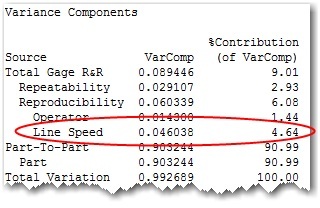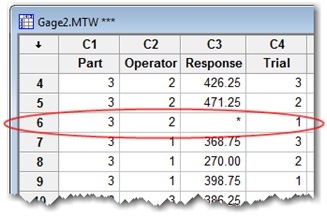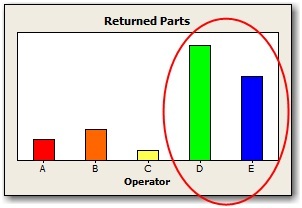Gage R&R studies can tell you if your measurement system is producing data you can trust. Unfortunately, rigid data requirements and other limitations can make Gage R&R studies difficult to analyze, and may not account for all important factors. The Expanded Gage R&R tool in Minitab makes these roadblocks a thing of the past.
What Can Gage R&R Studies Tell You?
- Is your measurement system sensitive enough?
- Is your measuring tool consistent?
- Are the people taking the measurements consistent?
What Additional Benefits Does Expanded Gage R&R Offer?
- Analyze not just parts and operators, but up to eight additional factors.
- Perform an analysis even with incomplete data (unbalanced studies).
- Include factors that are fixed or random for greater flexibility.
Include More than Two Factors in a Gage R&R Study
Traditionally, Gage R&R studies focus on just two factors: parts and operators. But what if you know that other factors also influence your measurement system? If you don’t include these factors, you’ll never know how much they affect measurement variability, and your measurement system may look better or worse than it really is. Minitab’s Expanded Gage R&R lets you include up to eight additional factors, so you can investigate and assess the impact of all the factors that may affect your measurement system.

For example
Because they work on the hectic production floor, testers are concerned that shifts in production speed are affecting their ability to measure. Adding line speed as a factor to their gage study reveals that changes in line speed influence their measurements even more than they suspected.
Perform Gage R&R Even with Incomplete or Unbalanced Data
Gage R&R studies can demand a rigid, “balanced” design, though the reality of data collection is often not so perfect. Perhaps it’s simply not feasible to have your operators measure all the parts in your study an equal number of times, or maybe some of the measurement data has been lost. Expanded Gage R&R allows you to analyze your measurement system, even with unbalanced data like this, without doing manual calculations to try to account for the missing data.

For example
After completing a gage study, analysts realize that a measurement was lost. The measurement can’t simply be retaken because this production run has already been shipped. Rather than remove all measurements of this part from the study, testers use Expanded Gage R&R with the unbalanced data.
Include Fixed or Random Factors for Greater Flexibility
In gage studies, if you intentionally select certain levels of interest (like the most and least experienced operators) then the factor is fixed. If you randomly select the levels to represent the overall population, the factor is random. Typical gage studies calculate results assuming all factors are random. But treating fixed factors as random factors can result in over- or underemphasizing their importance.
Expanded Gage R&R allows you to specify which factors are fixed and which are random for a better, more appropriate assessment of your measurement system.

For example
Audits show that the majority of out-of-spec parts returned to a precision milling facility can be traced back to the two least experienced testers. To better understand the problem, the quality manager would like to focus an upcoming gage study on these particular operators. Because hand-picking these operators doesn’t reflect random sampling, the manager specifies this factor as fixed when analyzing the study.
Minitab makes Gage R&R Easy
If you’re not already using the power of Minitab to get the maximum value from your data, download a free, fully-functional 30-day trial of Minitab Statistical Software today.



